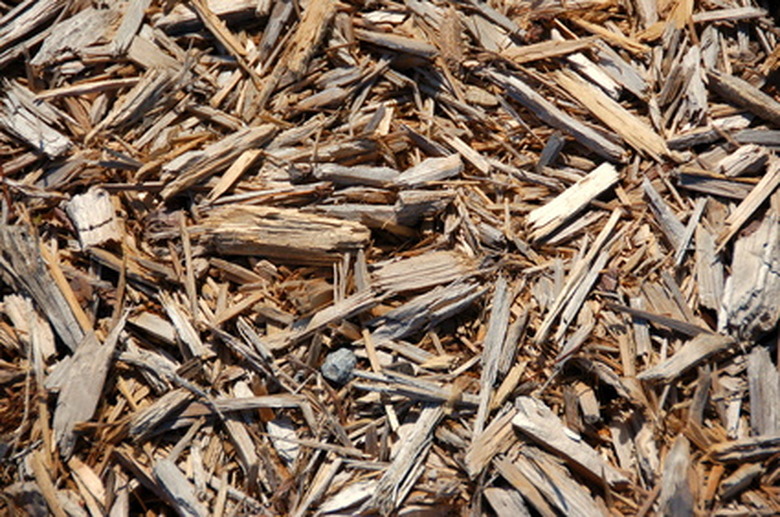Pine Bark Mulch Insects
Pine bark mulch, a commonly used organic material in the home garden, is susceptible to invasion of insects. Insect establishment is both beneficial and problematic, depending on the circumstances. Attracting insects to mulch near your home may lead to an unintentional invitation for them to move indoors. However, certain insects keep more problematic pests at bay.
Function
Pine bark mulch is added to the home garden for moisture retention and as a preventive tool to inhibit invasive weed growth. While organic mulches are beneficial and naturally decompose, they also attract insects seeking shelter, warmth and food. Insects feed on the pine bark mulch itself as well as on fungi and bacteria harbored within its dark, moist confines, according to the Kansas State University Cooperative Extension Service.
- Pine bark mulch, a commonly used organic material in the home garden, is susceptible to invasion of insects.
Types
The most common insects found in pine bark mulch are ants like carpenter ants that feed on wood as well as feeding termites such as the subterranean termite. Pests that are not true insects but are associated with infestations include spiders and arthropods such as millipedes and beetles.
Effects
Insects in pine bark mulch act as both good and bad additions to your landscape. Insects are beneficial because they eat decomposing organic matter, causing the mixing of nutrients and increasing the fertility of your soil as the mulch decays, according to the Ohio State University Extension. Insects like predatory ants hunt and kill arthropod pests, keeping your mulch and land free of infestations. However, insects like ants and termites may leave the mulch, entering nearby buildings and homes. Their entrance is problematic as they can cause structural damage, pose bite threats to residents, and create a nuisance.
- The most common insects found in pine bark mulch are ants like carpenter ants that feed on wood as well as feeding termites such as the subterranean termite.
- However, insects like ants and termites may leave the mulch, entering nearby buildings and homes.
Considerations
Certain types of mulch are much less attractive to insects than pine bark mulch. If you are experiencing a problem or prefer to reduce your risk, consider your options. Avoid gravel mulches that appear much more attractive to insects. Gravitate toward honey myrtle mulch that termites do not feed upon as well as aromatic cedar mulches that tend to repel ants, according to the Kansas State University Cooperative Extension Service.
Solution
When employing the use of pine bark mulch in the home landscape, follow careful application for reduced insect populations. Create a 2- to 3-inch layer of mulch. Avoid deeper layers that create a greater amount of space for insects and that often suffocate plant life below. Do not press mulch up against plant stems or tree trunks as this can cause root problems; create a 3-inch space surrounding stems and trunks, according to the Kansas State University Cooperative Extension Service. When using pine bark mulch near buildings, maintain a space of at least 6 inches before laying mulch to prevent insect invasion into homes and wooden structures. For severe infestations, contact your local extension agent or a licensed professional for further advice, including the potential for insecticide application to chemically kill insects.
- Certain types of mulch are much less attractive to insects than pine bark mulch.
- When using pine bark mulch near buildings, maintain a space of at least 6 inches before laying mulch to prevent insect invasion into homes and wooden structures.
